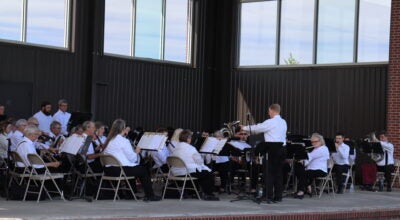South Korean Navy Visits Mississippi, Signs Agreement with U.S. Navy
Published 2:25 pm Tuesday, June 14, 2022
STENNIS SPACE CENTER, Miss. — Naval Oceanography hosted representatives from the Republic of Korean Navy (ROKN) for a two-day tour of U.S. Navy (USN) commands at NASA Stennis Space Center, Mississippi and signing of a Memorandum of Understanding (MOU) between the two navies, June 7-8, 2022.
This MOU, a regularly-signed joint agreement, reaffirms commitment to enhance the ROKN-USN partnership by sharing information on oceanography, hydrography, and meteorology best-practices.
Foundationally, the MOU aligns with the 2022 National Defense Strategy (NDS) priorities: (1) defending the homeland, paced to the growing multi-domain threat; (2) deterring strategic attacks against the U.S., Allies and partners; (3) deterring aggression, while being prepared to prevail in conflict when necessary; and (4) building a resilient Joint Force and defense ecosystem.
“The signing of this agreement is historic and demonstrates our navies’ commitment to continued growth in our oceanographic alliance,” said RDML Ron J. Piret, Commander, Naval Meteorology and Oceanography Command (CNMOC).
The ROKN cohort included: CAPT Jaesic Park, Commanding Officer, ROKN Naval Intelligence Group (NIG); Chief Warrant Officer Sanghwan Chung; and Mr. Ansung Kim from the ROKN NIG.
In solidarity between the U.S. and ROK as allies, Piret and Park signed the MOU, strengthening ties between the two countries.
“Our [Naval Oceanography] partnerships are built into our strategy because ‘partnership’ is a tool of leverage to create a warfighting advantage and is built into the foundation of the national defense for both our countries,” said Piret.
Naval Oceanography’s counterparts attending the tour were: CDR Chris Tuggle, Commanding Officer, NAVOCEANASWCEN Yokosuka; LT William Griffin, CNFK METOC; and Mr. Joe Johnson, CNMOC Fleet Representative.
During the visit, Naval Oceanography and ROKN representatives had discussions on understanding the physical-battlespace environment and its importance to unmanned systems operations.
The group also toured and became familiar with Naval Oceanographic Office (NAVO) program offices, operational equipment from Fleet Survey Team (FST) and Naval Oceanography Mine Warfare (NOMWC), all used to collect massive data.
“We put more than 1300 unmanned observing systems out for monitoring the environment collecting about 18 million observations a day from various systems,” Piret continued. “It’s about providing decisive advantages to our Navy and Department of Defense (DOD) allies and partners by ensuring that our weather and ocean environmental information superiority is better than anyone else, and we rely on UUV expertise to execute that.”
In addition, Piret and Park, discussed possibility of an exchange program in regards to enlisted personnel from the USN and ROKN Oceanography communities to exchange billets between the two navies.
ROK-U.S. Alliance, forged in blood on the battlefield 70 years ago, serves as the linchpin of peace, security, and prosperity on the Korean Peninsula and the Indo-Pacific region. Amid increasing global threats, the Alliance has never been more important.
The ROK-U.S. Alliance remains committed to peace and prosperity on the Korean Peninsula and throughout the Indo-Pacific. The U.S. commitment to the defense of the ROK remains ironclad.
U.S. Naval Meteorology and Oceanography Command directs and oversees more than 2,500 globally-distributed military and civilian personnel who collect, process and exploit environmental information to assist Fleet and Joint Commanders in all warfare areas to make better decisions, based on assured environmental information, faster than the adversary.





